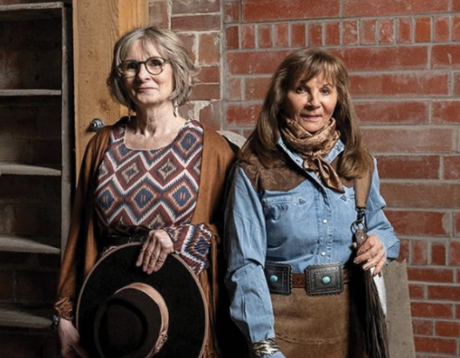
Western silversmithing is a unique art with numerous technical and creative demands. Scott Hardy of Longview, Alta., has 38 years of experience in mastering his skills as a craftsman and artist. His efforts have ensured that Western silversmithing will continue to progress into the future through his involvement with the Traditional Cowboy Arts Association (TCAA). Hardy shares his thoughts on his craft, the qualities shared by masters of any discipline and the future of this art.
“A traditional silversmith is a person who builds vessels or flatware, typically with heavier sterling silver. A jeweller is someone who works with smaller objects in silver and gold. Western silversmiths, because of the demands of our clients, have to be extremely diverse and pull from both of these worlds. Your work has to be able to withstand punishment, such as a horse rubbing a concho on a corral fence. It must be both beautiful and functional.”
For Hardy, Western silversmithing is tied to the culture of the North American cowboy. While some may view it as crude or kitschy, Hardy harkens back to the early settlers of North America, who brought with them pieces of finery from the Old World to bring a bit of elegance to the rugged West. For his grandmother who emigrated from England, it was a prized silver teapot. That blend of the harsh Western environment with the appreciation for refinement and beauty helps define the culture that informs Hardy’s work.

“I’ve lived the life; I want my work to embody the strength, independence and resilience of the West. I want my work to be able to compete with any work in the world. People may look at me like I’m strange, but I made a choice to take Western silversmithing as far as I could take it. Be it a buckle or a vase, it doesn’t matter to me. It represents the West.”
There was a turning point in Hardy’s early career when a respected mentor presented him with a challenge. He had been building bits and spurs along with the silver work of conchas and buckles. He was spending time with silversmith Al Pecetti, who took him to meet famed bit maker, Al Tietjen. Each man’s shop was arranged to handle the unique demands of each of their crafts. Hardy remembers sitting with these two masters as a young man and having his work evaluated by Tietjen.
“I was totally in awe, and he says to me, ‘If I can give you one piece of advice, it would be to pick one craft and give it the honour of studying it all that you can.’ I thought about that a lot. I made a commitment to my trade, to learn every aspect of how to work with the metal, to learn about design and composition, and after 38 years I feel like I’m just scratching the surface of the art… The desire to achieve mastery is both inherent and encouraged. Talented people can do a lot of different things. If they have the desire, they can learn a lot of different things. But you must have the discipline to not be distracted, to instead become enamoured with the material and the process. Without discipline, mastery will never happen.”

“You can’t learn how to be an artist, but you can learn how to be a craftsman. Then you can choose to take your work past the point of craftsmanship and into the world of art. You can’t do that without dedication. You can’t take those incredible ideas that you have in your head and turn them into pieces if you don’t have the skills and the knowledge; and that’s the same thing whether you’re working with silver, paint or clay. If you go back to the great master painters in Europe, they had apprentices who learned how to mix paint and stretch canvas. They had to learn the craft first.”
Hardy, a founding member of the TCAA, remembers a time before the organization when educational opportunities were few and far between, and a lower quality work was being hailed as good. Hardy speaks with pride when discussing how much the organization has accomplished. “Over the 21 years, we have raised and given away over $300,000 U.S. in scholarships to people who have a desire to learn. We’re not saints, but that is pretty selfless. These traditional Western arts are part of our culture. They are worth being saved and worth being moved forward into the future.”















